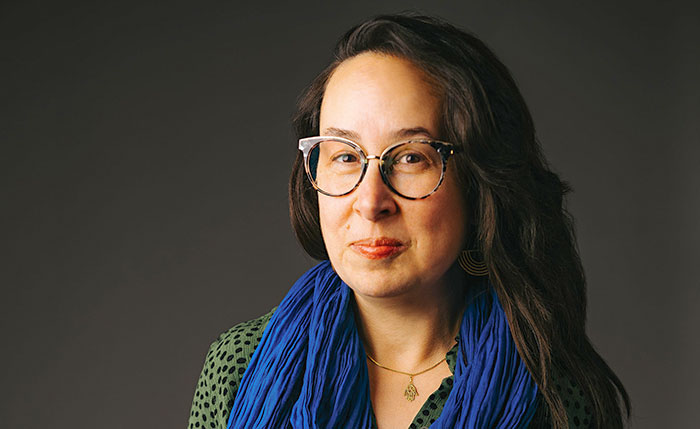City council slows down to assess speed increase options (updated)
The Claremont City Council has opted to temporarily forego speed limit increases to 10 city streets—including Mountain and College Avenues and Scripps Drive—as it evaluates traffic-calming measures instead. Measures include additional street striping and playground speed zones. The city will also explore a potential 15 mph speed limit near schools and the possibility of extending school zone areas.
The council’s unanimous decision was reached after a lengthy discussion Tuesday night. While increases are needed in order for radar to be enforced on those streets, the council peppered staff and police with questions in an attempt to find another way around controversial state standards.
“I’m just trying to find a loophole here,” councilmember Sam Pedroza stated to cheers from the audience.
The speed increases were brought before the council after recent radar survey revealed that speed limimts on several local thoroughfares were not in compliance with current state standards. The 2010 California Manual on Uniform Traffic Control Devices (MUTCD) calls for the speed to be set to the nearest 5 mph increment from the 85th percentile speed. When the city conducted the last survey in 2005, the MUTCD requirement was that the speed be set within 5 mph of the 85th percentile speed.
The state’s strict speed regulations have created controversy not only for local governments, but at the state level as well. Several bills have been introduced over the years, with the most recent being AB 529, in an effort to change the restrictive language of the 85th percentile rule. However, the regulations continue to be upheld.
Council will look at traffic-calming measures as well as pursuing reclassifying several streets—Scottsbluff, Scripps and Radcliffe—before potentially re-conducting the speed survey. Because of its decision to leave the limits at current levels, the speeds along those designated street segments will not be enforceable by radar, according to Chief of Police Paul Cooper.
The decision to hold off on increases was a welcome relief for dozens of residents, most with homes along Scripps and Radcliffe Drives.
“It’s a step in the right direction,” said Mark Godt, who arrived at the meeting with the signatures of 189 residents against the speed limit increases.
Mr. Godt, a resident of Scripps Drive, says the speeds along his street, even before the potential increase, are already too high. At the first hearing of the speed survey last June, Mr. Godt shared that his wife has trouble getting in and out of the driveway because of the speed of traffic, and that the couple fears letting their children play in the front yard because of the high volume of activity.
The traffic and transportation commission had given the speed increases a reluctant positive recommendation, however, council shelved the increases in response to concerns raised by residents.
“We represent the people and when a number of people express a concern like, that we have a responsibility to look deeper into the issue,” said Mayor Larry Schroeder. While noting that the 85th percentile might stay the same, he noted that the council is at least going to attempt to calm down the traffic issues residents report experiencing on their streets.
Councilmembers did, however, recognize the risk they run by redoing the survey. Speeds could increase to an even higher level, the councilmen noted, or the 85th percentile could remain the same and the city will still be forced to raise the speeds. Regardless of the end result, Mr. Schroeder said he would continue to work with Claremont’s state representatives to explore ways to create leeway for city speed limit mandates.
“It’s going to be tough,” Mr. Schroeder recognized, noting AAA and California Highway Patrol’s strong push to keep the law as is, “but we are going to try.”
****
With direction provided to staff by Mr. Pedroza, the city will evaluate adopting a resolution to support Proposition 30 in the upcoming November election. The resolution will be brought up for review at the Tuesday, October 23 council meeting.
Proposition 30 calls for a quarter-cent rise in sales tax over the next 4 years and an increase in income tax for those earning more than $250,000 annually to provide additional funding to California’s public schools as well as to public safety funds. Proponents claim that if the proposition is not passed, it would be a devastating blow to the already crippled education system. Critics argue that the initiative seeks to provide more taxpayer dollars for education without addressing wasteful spending.
Mr. Pedroza’s recommendation was prompted after comment from several CUSD administrators including Joe Tonan, Claremont Faculty Association past president and David Chamberlain, current CFA president, who says the state’s public schools are being asked to do “more with less.”
“That equation just doesn’t add up,” Mr. Chamberlain said. “We are at a breaking point in our Claremont schools.”
Last Thursday, the CUSD Board of Education unanimously passed a resolution supporting Prop 30. Educators are now asking the Claremont City Council to do the same. While recognizing that the measure might not be a permanent solution, Mr. Tonan said it is one that will help public schools get through the next few years.
—Beth Hartnett
news@claremont-courier.com










0 Comments